INDOOR CUSTOM BATS
Design an Indoor cricket bat that moulds to your game.
Our Custom range empowers you to build your dream shape through our website. Select various profile, edge, handle, and spine designs to custom make your perfect Fantail cricket bat.
Once we receive your order, you will work with Blake, our bat maker, to draw up a design that moulds to your game.
Our custom range also includes replicating bats. You can send or drop your bat off in-store, or we can use pictures and specifications to draw up a design. You can type that you'd like us to make a replica in the additional information box on each custom product page.
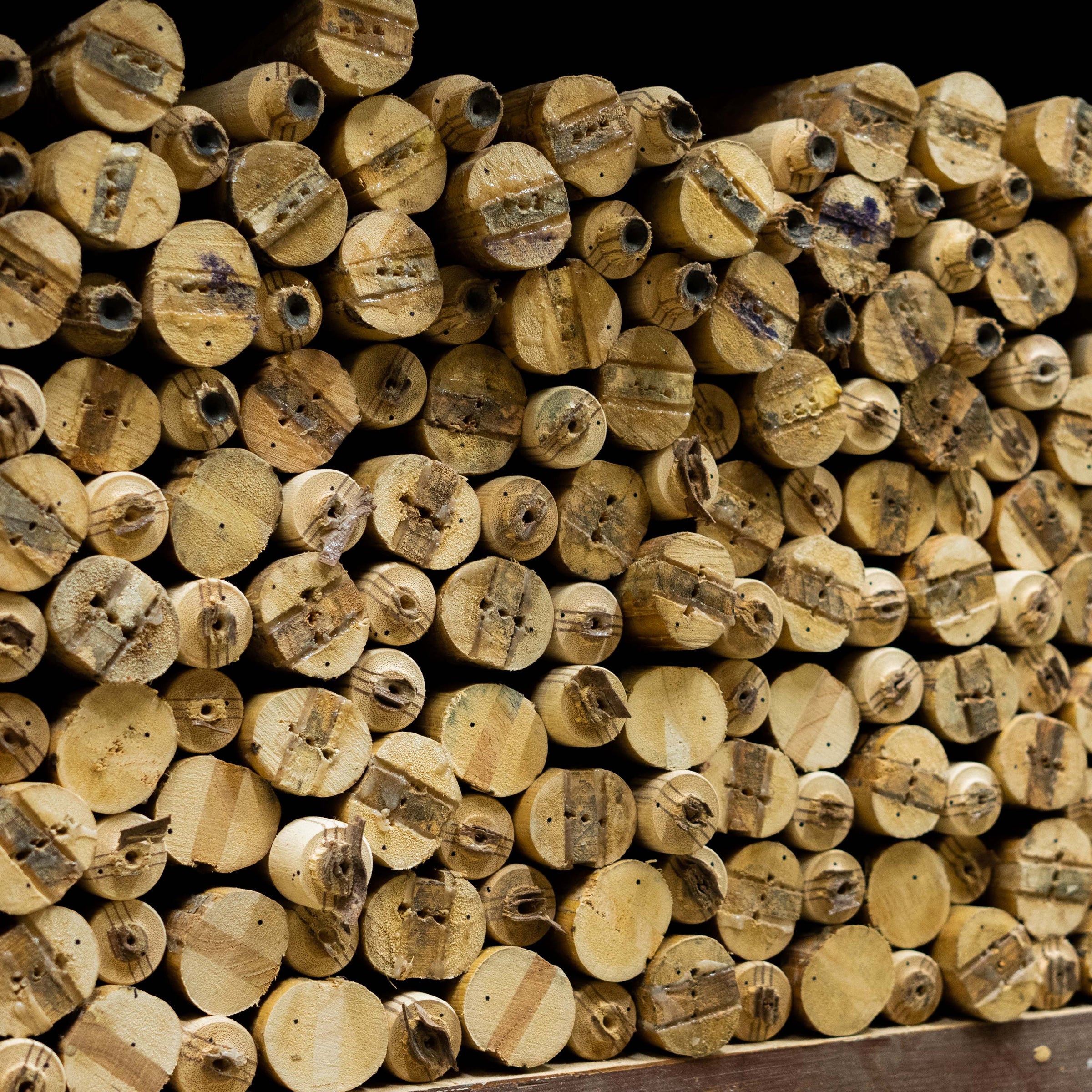
HOW OUR MADE TO ORDER BATS ARE MADE
Each cricket bat willow tree is grown in the UK for around 20 years before being processed & into raw clefts.
Our high-quality Singapore Manu cane & cork cane handles are made in Jalandhar, India.
Once the raw clefts and handles arrive in our Auckland, New Zealand workshop, the clefts are machined, handled and run through our two-stage pressing process, which maximises the potential performance of each piece of willow.
They are then given a final grade, shaped by hand and finished to your chosen specifications. We trust in our process, which allows you to confidently walk to the crease, knowing that you're using a premium product that will perform under pressure.
selection guide
All the information you need to select the correct options for you.
Size Guide
SMALL ADULT - SA
Players Height: 1.68m - 1.75m
Bat Length: 84cm
Blade Width: 10.7cm
Handle Length: 29.5cm
Weight Range: 2lb 6oz & Above
SHORT HANDLE - SH
Players Height: 1.68m - 1.88m
Bat Length: 85cm
Blade Width: 10.7cm
Handle Length: 29.5cm
Weight Range: 2lb 6oz & Above
LONG HANDLE / SHORT BLADE - LH/SB
Players Height: 1.68m - 1.88m
Bat Length: 85cm
Blade Width: 10.7cm
Handle Length: 31.5cm
Weight Range: 2lb 6oz & Above
LONG BLADE - LB
Players Height: 1.88m & above
Bat Length: 87cm
Blade Width: 10.7cm
Handle Length: 29.5cm
Weight Range: 2lb 9oz & Above
LONG HANDLE - LH
Players Height: 1.88m & above
Bat Length: 87cm
Blade Width: 10.7cm
Handle Length: 31.5cm
Weight Range: 2lb 9oz & Above
LONG BLADE / LONG HANDLE - LB/LH
Players Height: 1.88m & above
Bat Length: 89cm
Blade Width: 10.7cm
Handle Length: 31.5cm
Weight Range: 2lb 9oz & Above
Bat weight
The general rule is light bats for the controlled players and slightly heavier bats for the aggressive and attacking stroke-makers.
Heavier bats have a slower bat speed than lighter bats. The effort required to move the bat increases as the weight of the bat increases. A lighter bat will allow faster bat speed and increase the chance of middling the ball. A heavier bat will not be comparatively easy to middle the ball with, but it will stay hit when you connect with it.
Indoor bats are considerably lighter than outdoor bats as the game is more about bat speed and control over outright bat performance and power.
Use these weights as a guide when choosing the weight of your indoor bat:
Light (2lbs 1oz - 2lbs 3oz): We recommend this weight range if you are moving from junior sizing to your first full-size bat or if your moving into the finishing stages of your playing career and are looking for a lighter bat that may help if you carry a lingering injury
Regular (2lbs 4oz - 2lbs 5oz): This is a standard weight range for a full-size indoor cricket bat. It is an excellent balance between bat speed and bat performance.
Heavy (2lbs 6oz +): you get a bat less about bat speed and more about overall performance. This weight range is for players who want to score their runs by hitting the back net.
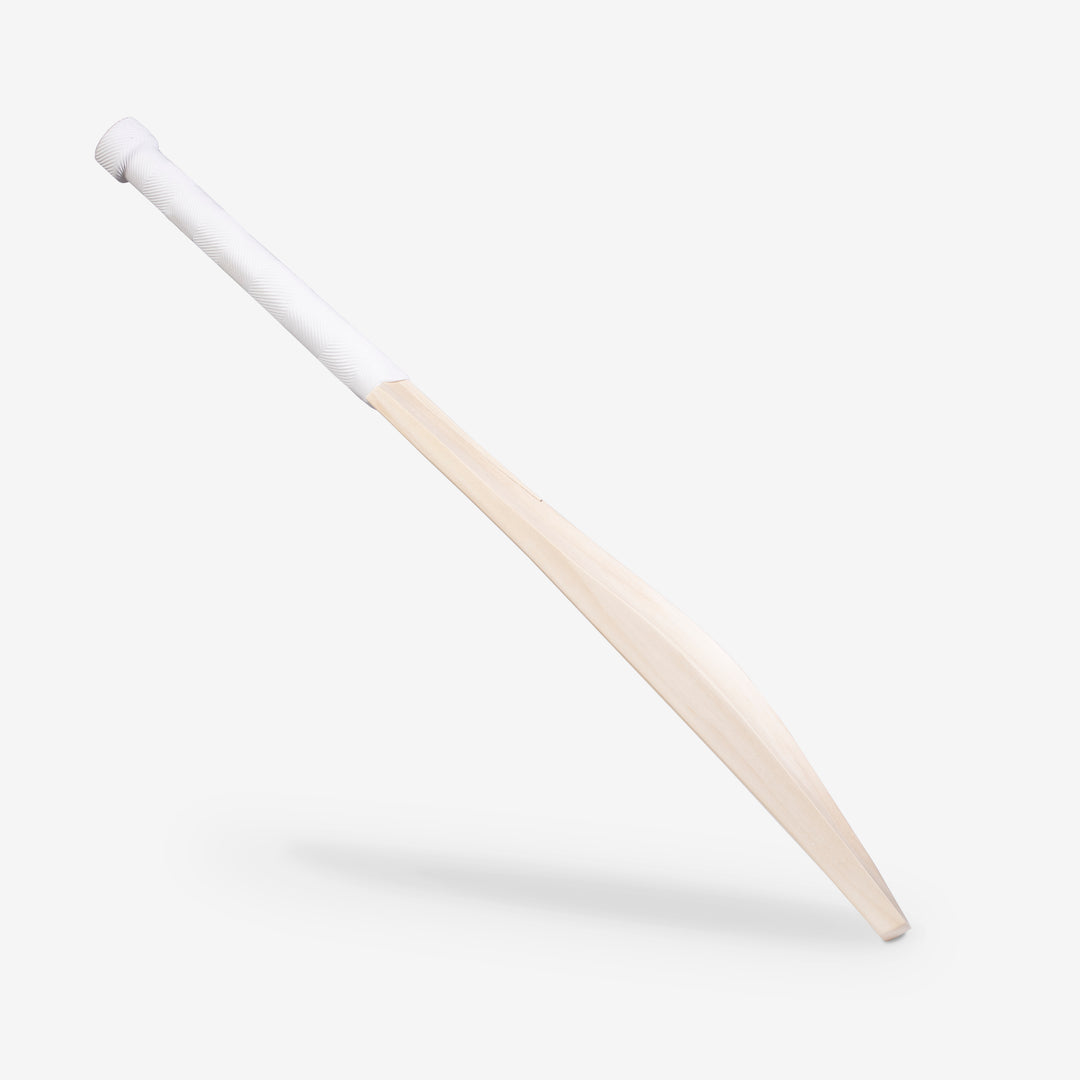
Bow & Face
Our 2 stage pressing technique generates a balanced bowed blade to deliver increased power and control. Our modern flat face allows for enhanced shot placement. The edges are boned (hardened) to strengthen and decrease the chance of cracking.
Profile
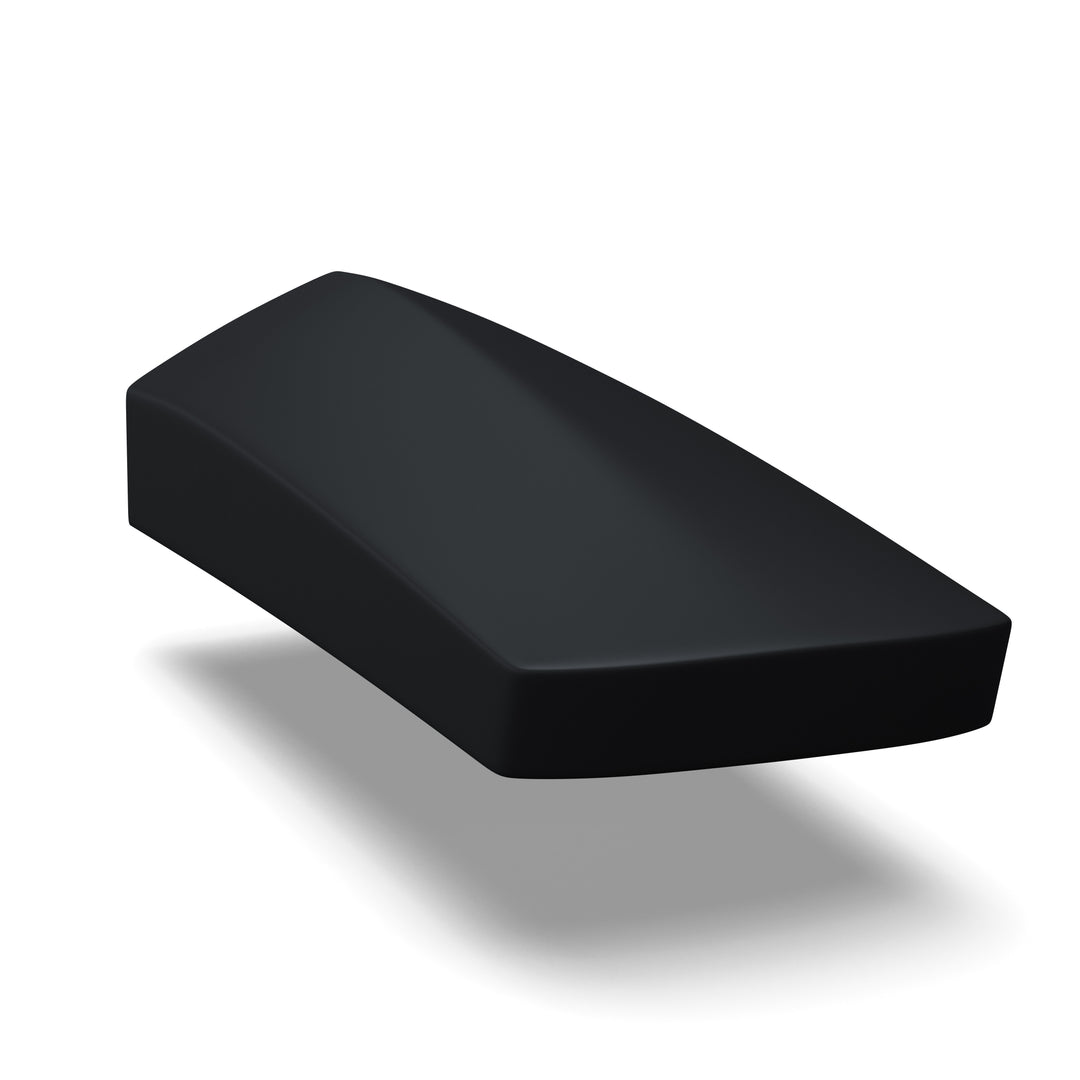
Full
With little to no scallop, wood is left where it is essential to ensure performance. If performance is your priority, then this should be the focus. This is the shape that most professional cricketers seek due to it offering maximum forgiveness when hitting off centre. However, a full profile significantly increases the weight, which means it's not usually possible on lightweight bats.
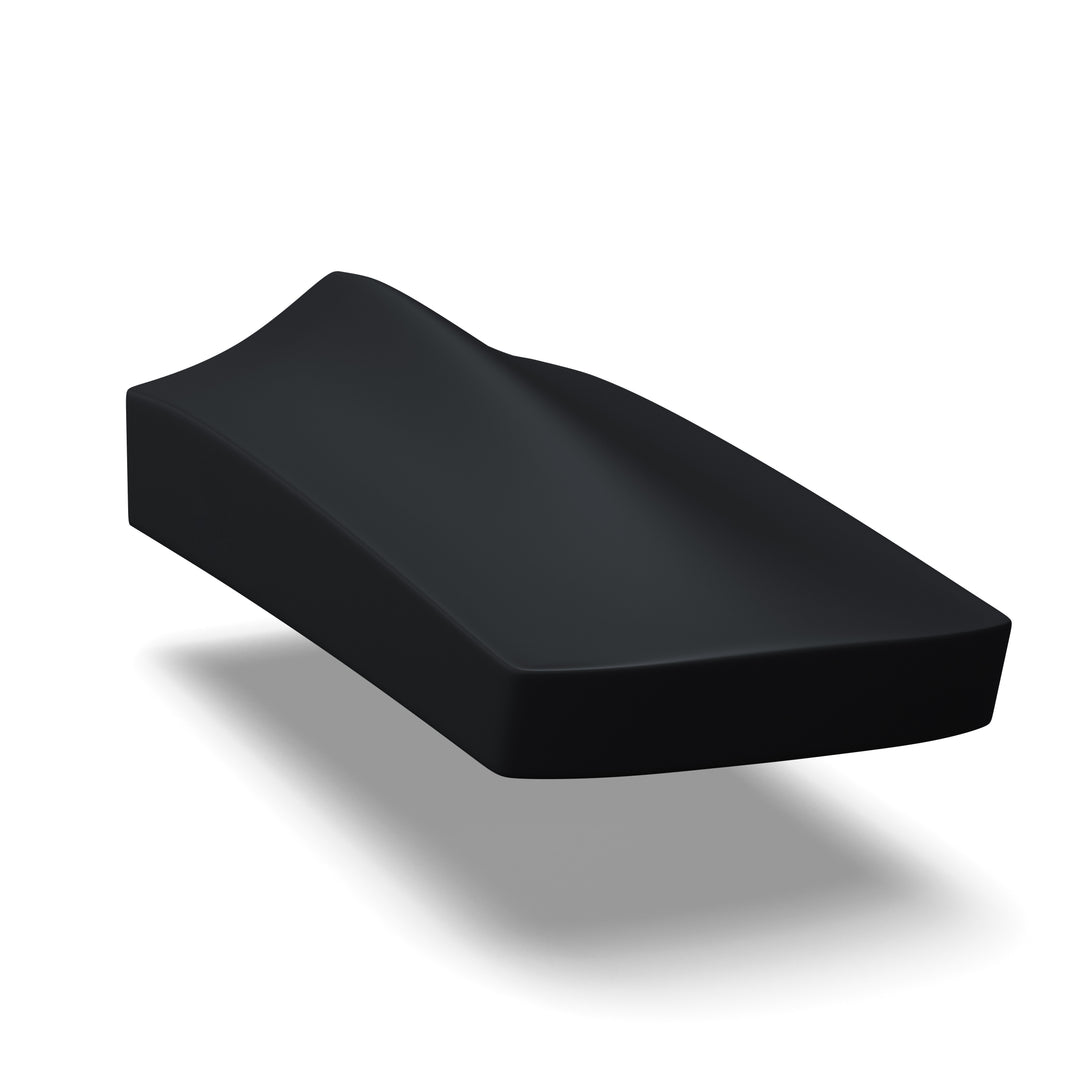
Semi-concaved
Semi-concaving is a balance between concaved and full, allowing an even distribution of willow through the edges and spine while maintaining good off-centre power. This is especially suited to lightweight bats as the concaving is required to reduce the bat's weight.
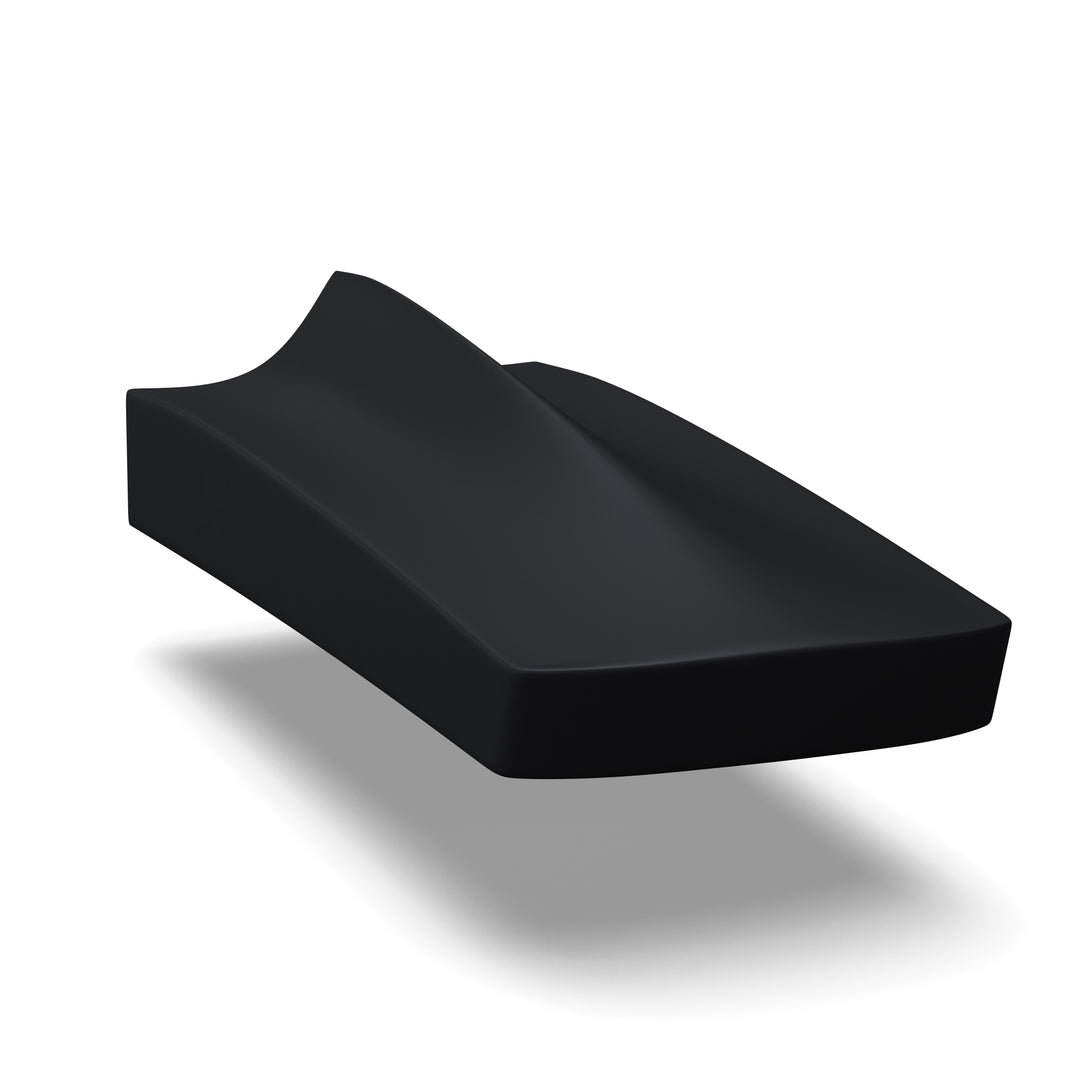
Concaved
Concaving allows a maximum spine and edge. However, off-centre strikes aren't as powerful as a full profile. Weight is removed through the back of the blade whilst keeping a high edge and spine. If you're after an imposing edge and spine, then this is a great option.
sweet spot position
The sweet spot or middle of the bat is the blade area where you achieve the most significant amount of power. Therefore, if you have a bat with a high sweet spot, you need to regularly hit the ball high on the blade to get the best out of the bat.
When choosing the spine position, remember the higher you go, the better the pick up will be.
We give you the option of having a different spine peak position to the edge. Having an offset edge and spine is designed to lengthen the middle, improving the pickup and balance. This option is optimal if you like a low sweet spot.

High
A high sweet spot is located 25cm to 28cm from the toe. This bat suits a player who opens or plays the ball late & prefers playing short-pitched bowling off the back foot. The weight distribution is higher up the blade, meaning that the bat speed is improved. This type of bat suits batters who like to cut, hook and pull.

Central
Most players will have a bat with the central sweet spot located 22cm to 24cm from the toe. A bat with a central sweet spot will suit a batter who plays the full range of shots. This sweet spot does not favour any style in particular.
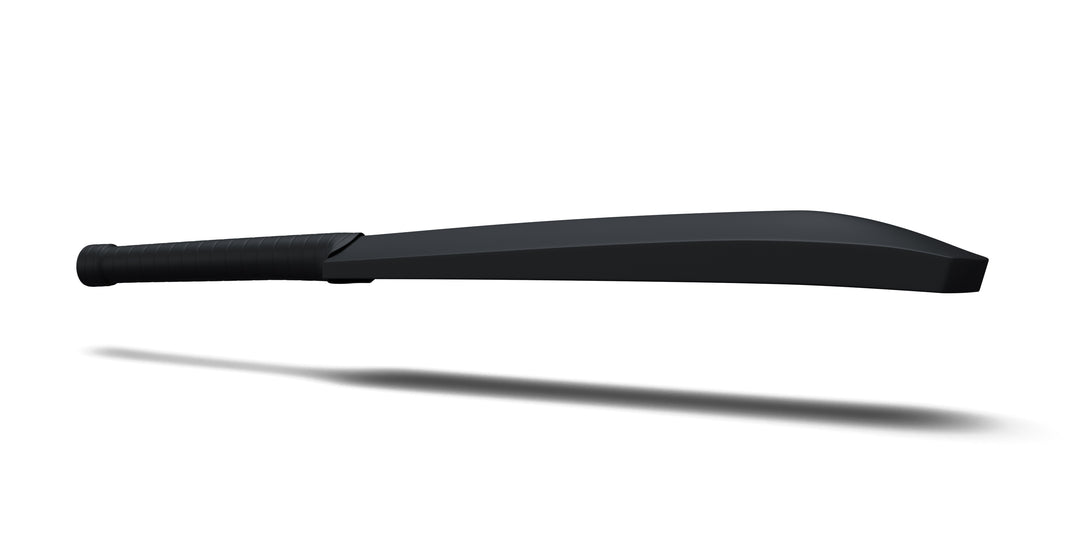
Low
A low sweet spot is located 14cm to 17cm from the toe. This type of bat suits a player that enjoys driving the ball and playing aggressively. It is particularly suited to wickets that don't have much bounce. The pick-up won't feel as balanced due to the willow mass sitting closer to the toe.
Toe shape
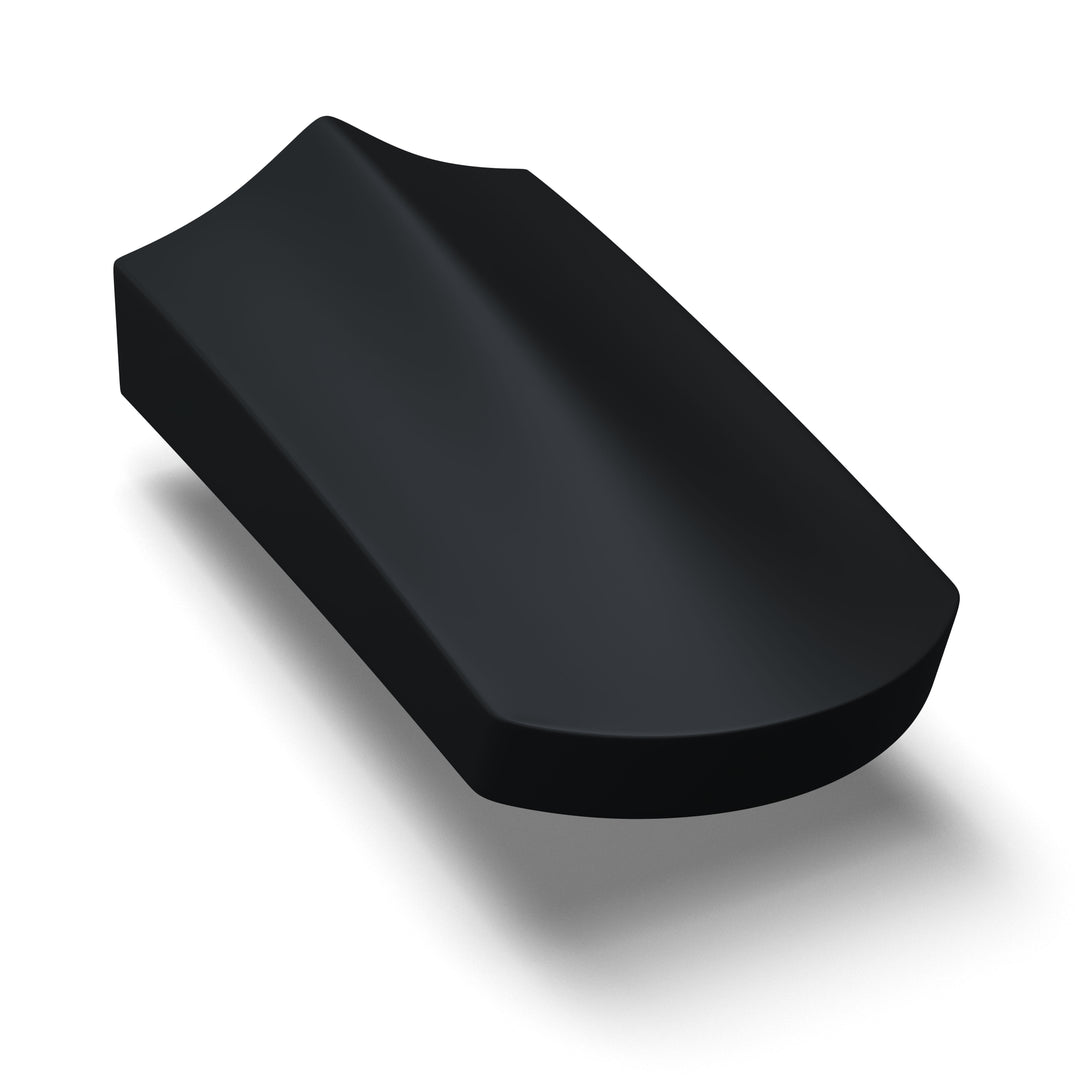
Round
A round toe will help prevent toe damage, particularly if you are a constant crease tapper. Both round and semi-round shapes assist you in sliding your bat into the crease.
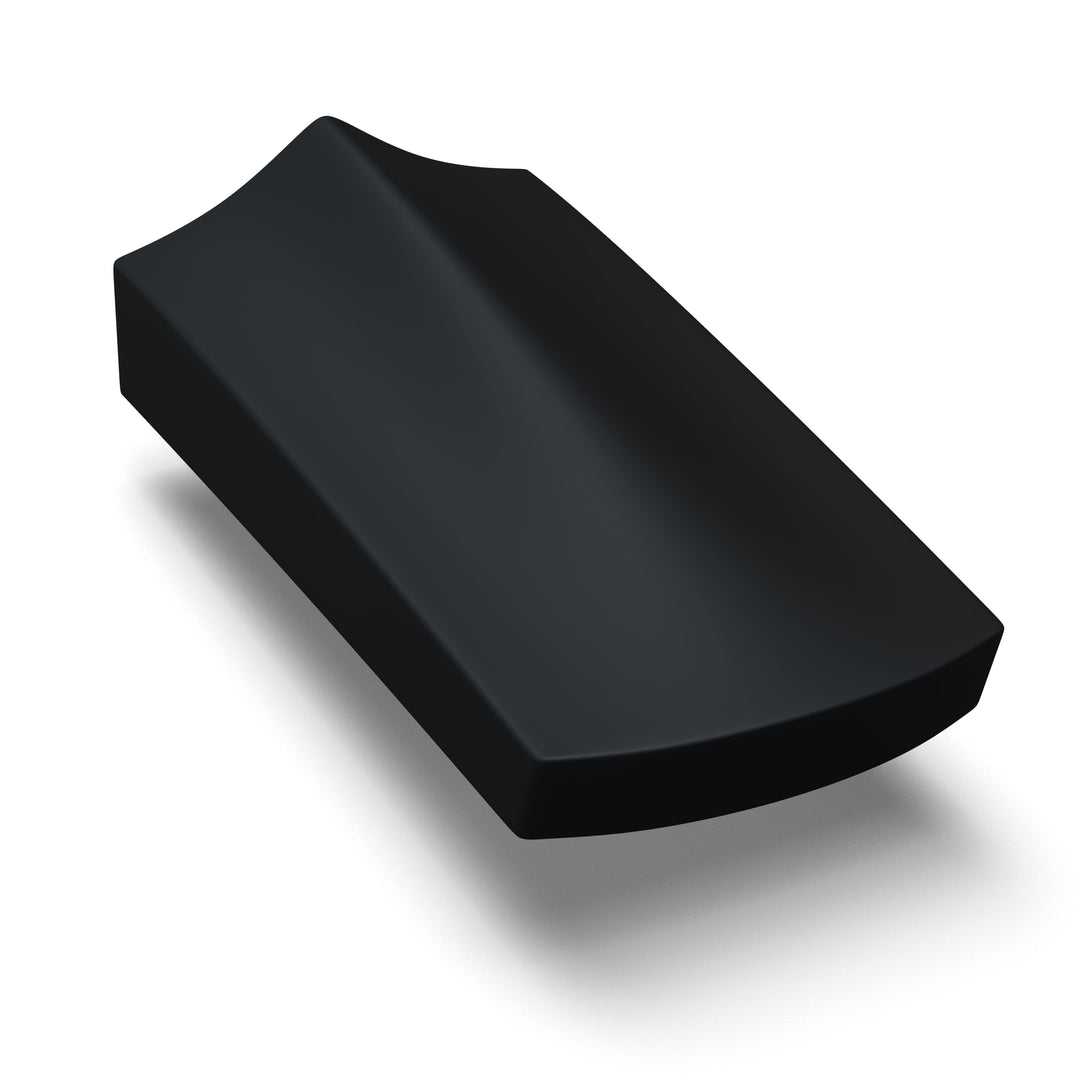
semi-round
The semi-round toe is our most popular choice as it gives you the best of both styles. Both round and semi-round toes assist you in sliding your bat into the crease.
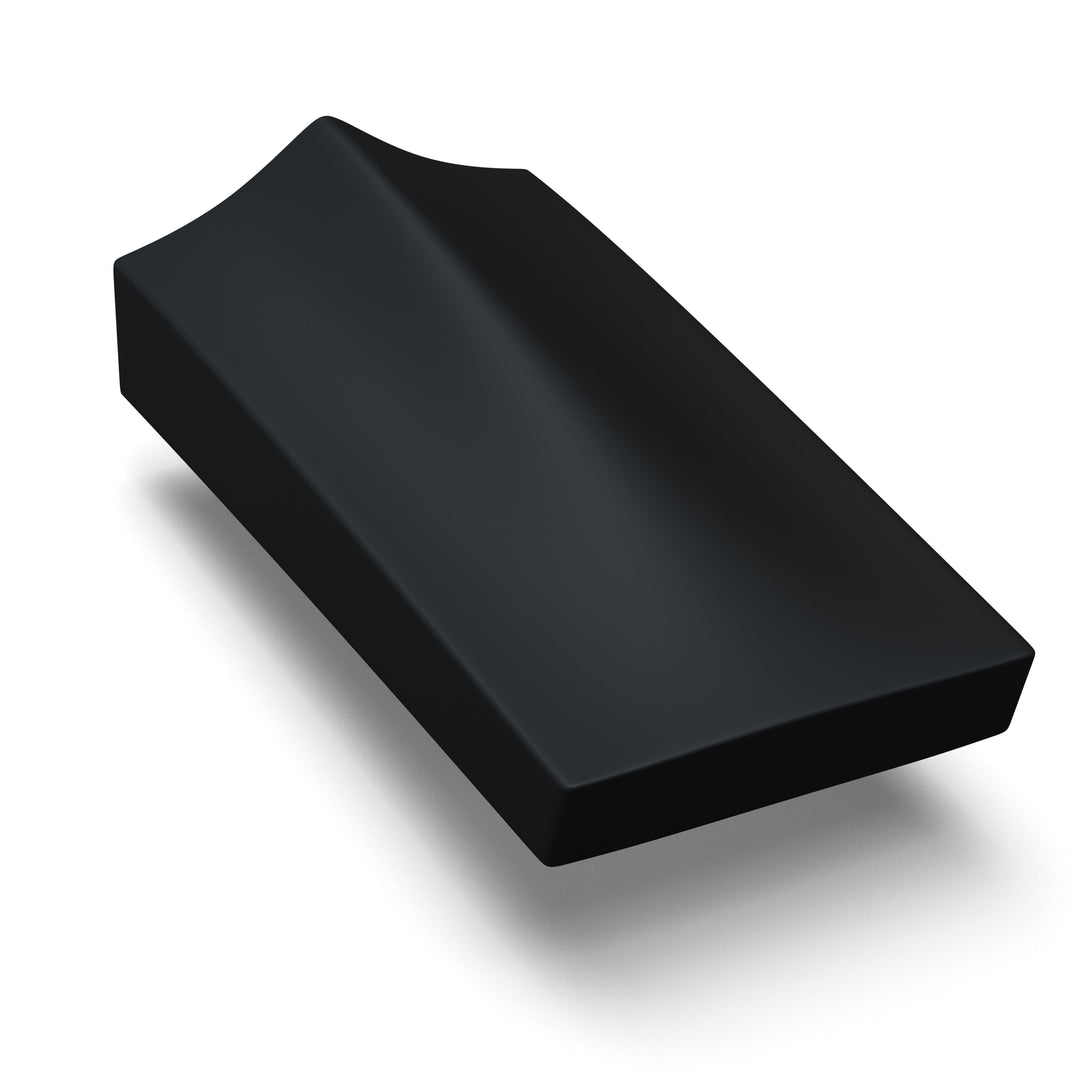
square
International players have widely used a square toe as it makes the blade appear wider and is stable while in stance. The drawback is the corners are prone to damage and digging into the pitch when sliding.
handle Shape
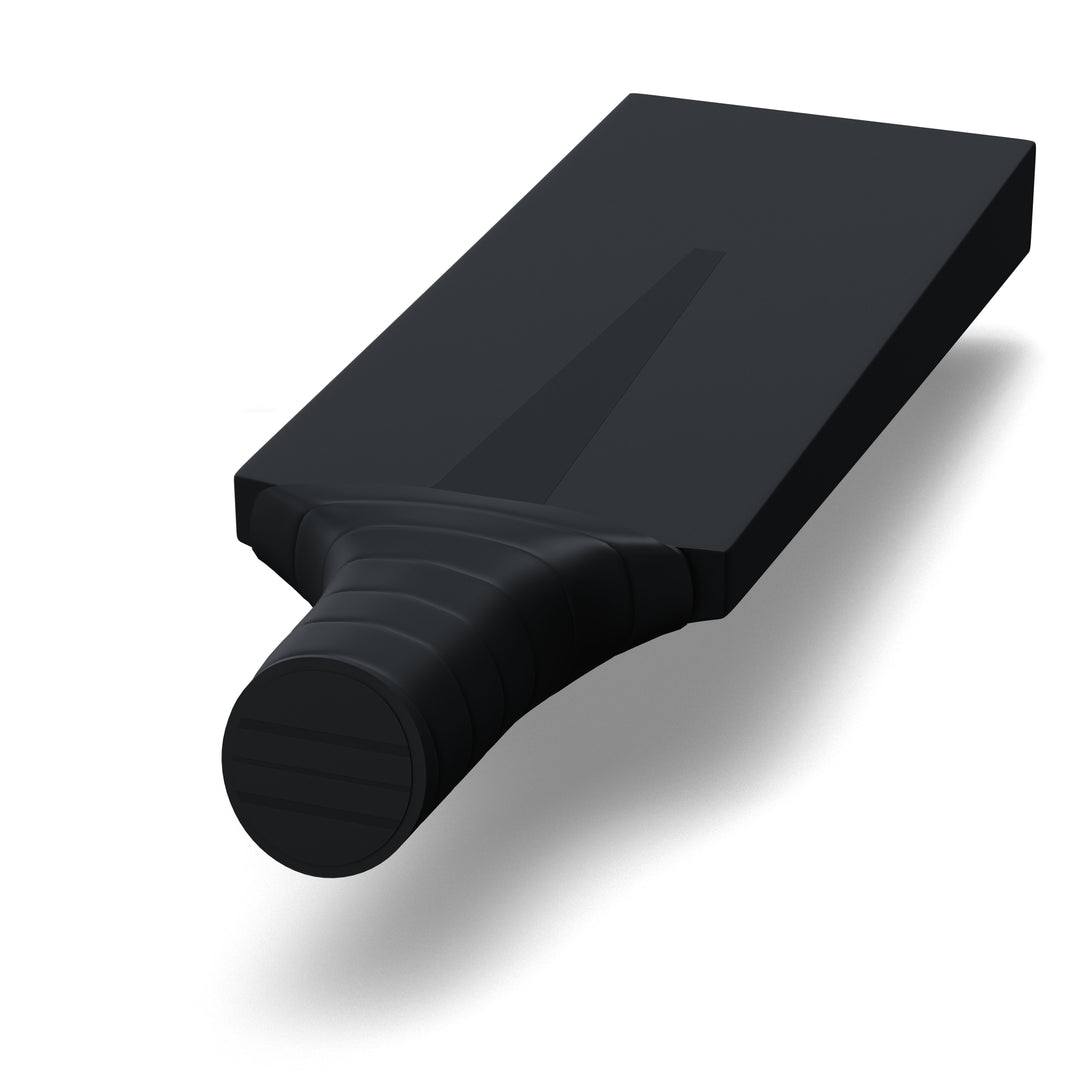
Round
The round handle is best suited to those who like to use their bottom hand and wrists for control and power. The round handle is popular in the subcontinent.
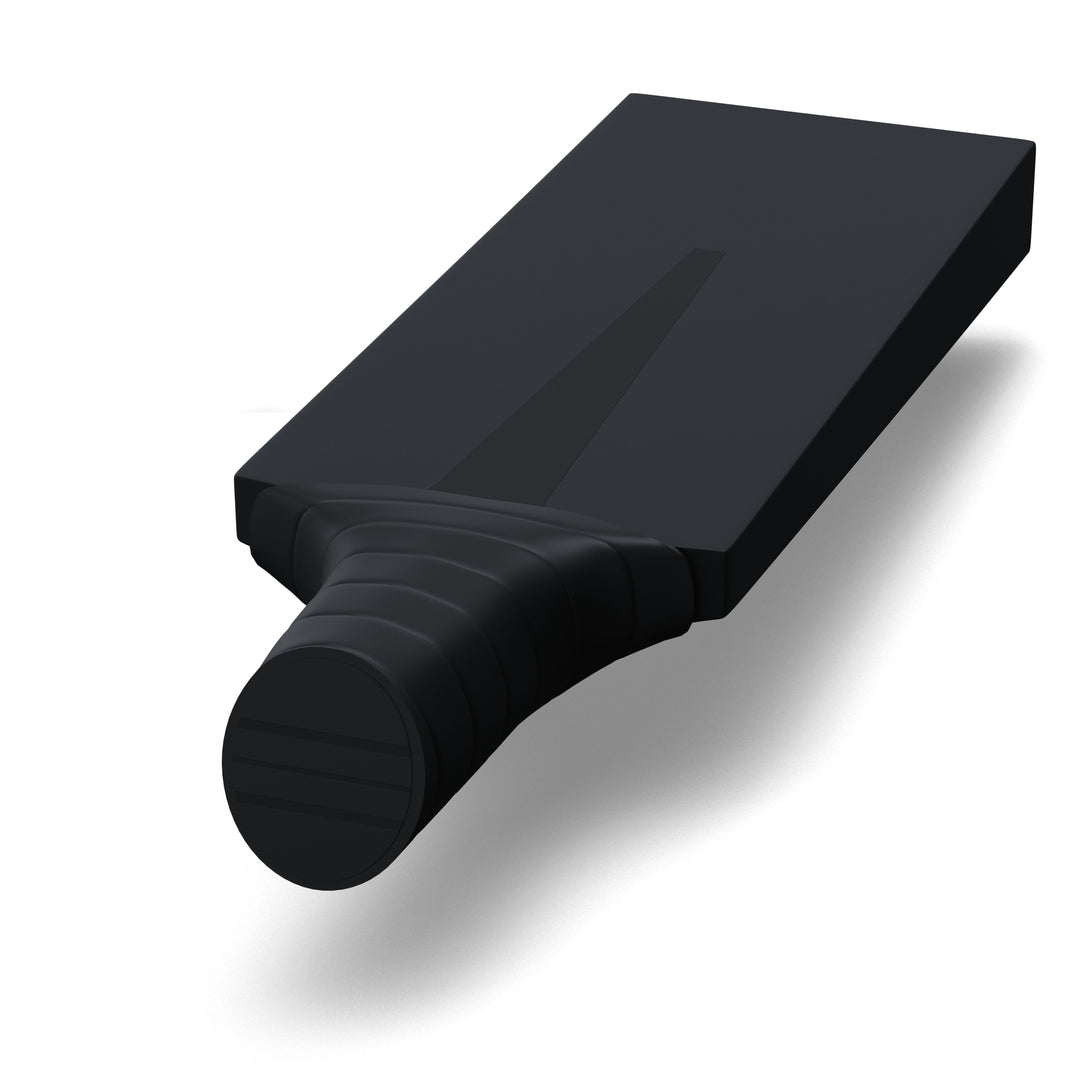
Semi-Oval
The semi-oval handle is our most popular choice as it gives you the best of both styles. It allows for a consistent and comfortable feel for most batsmen.

Oval
The oval handle provides more strength to the handle as the circumference is larger. The oval shape on the bottom hand also gives the bat a better directional feel & means that the bottom hand isn't dominant, enabling the top hand to control the shot.
In October 2017, the new MCC laws on cricket bat sizes came into force for the professional game. The new code means that the maximum dimensions of a cricket bat will be 108mm in blade width, 67mm in spine height with 40mm edges. A bat gauge has been developed for umpires to check players bats, and we use one in the workshop to guarantee your bat will fit through.
The laws are only applicable to the professional game, but there is a moratorium period for the amateur game. This period means that amateur players can still use and purchase oversized bats that may violate the Law, which is why we give you the option.
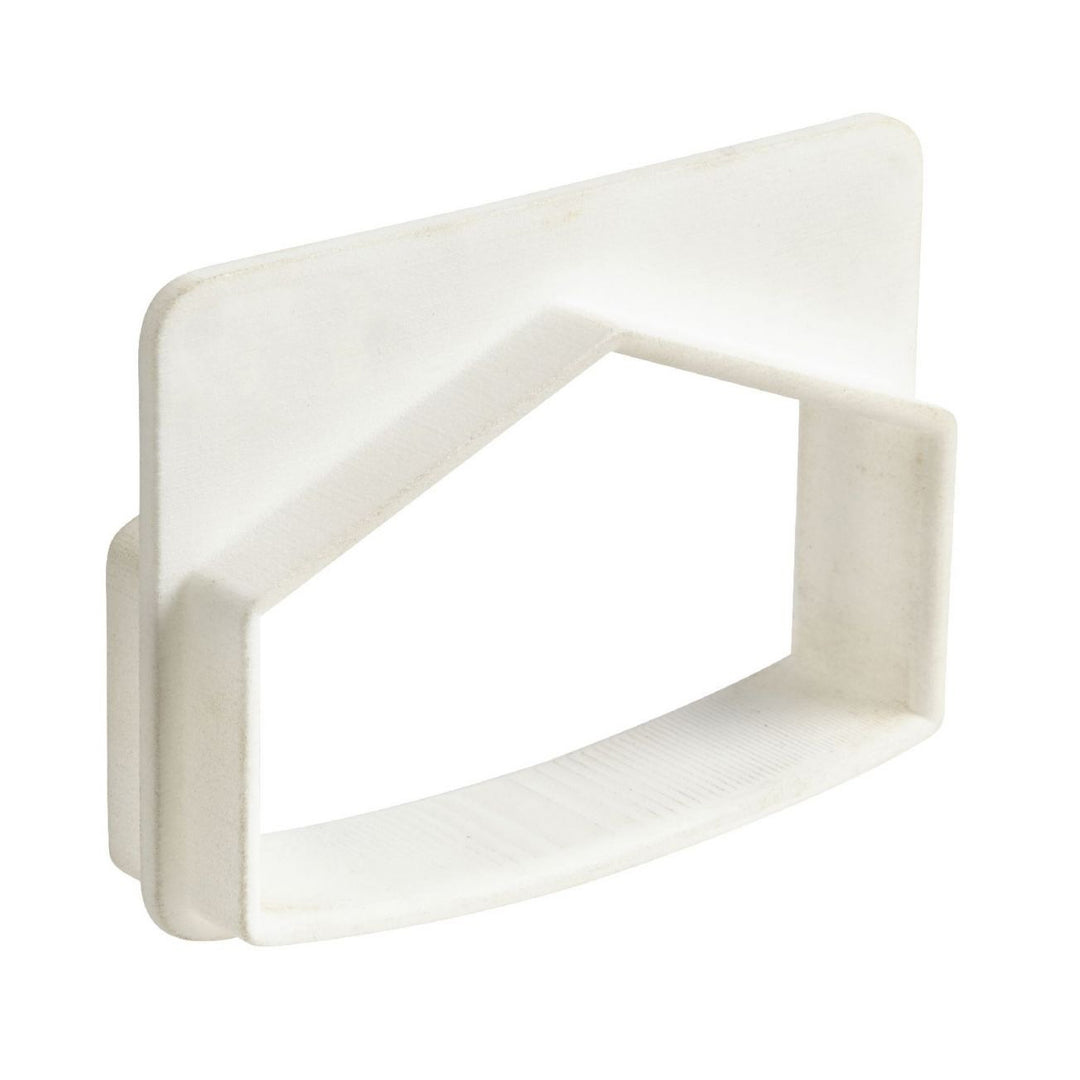
Grip Texture
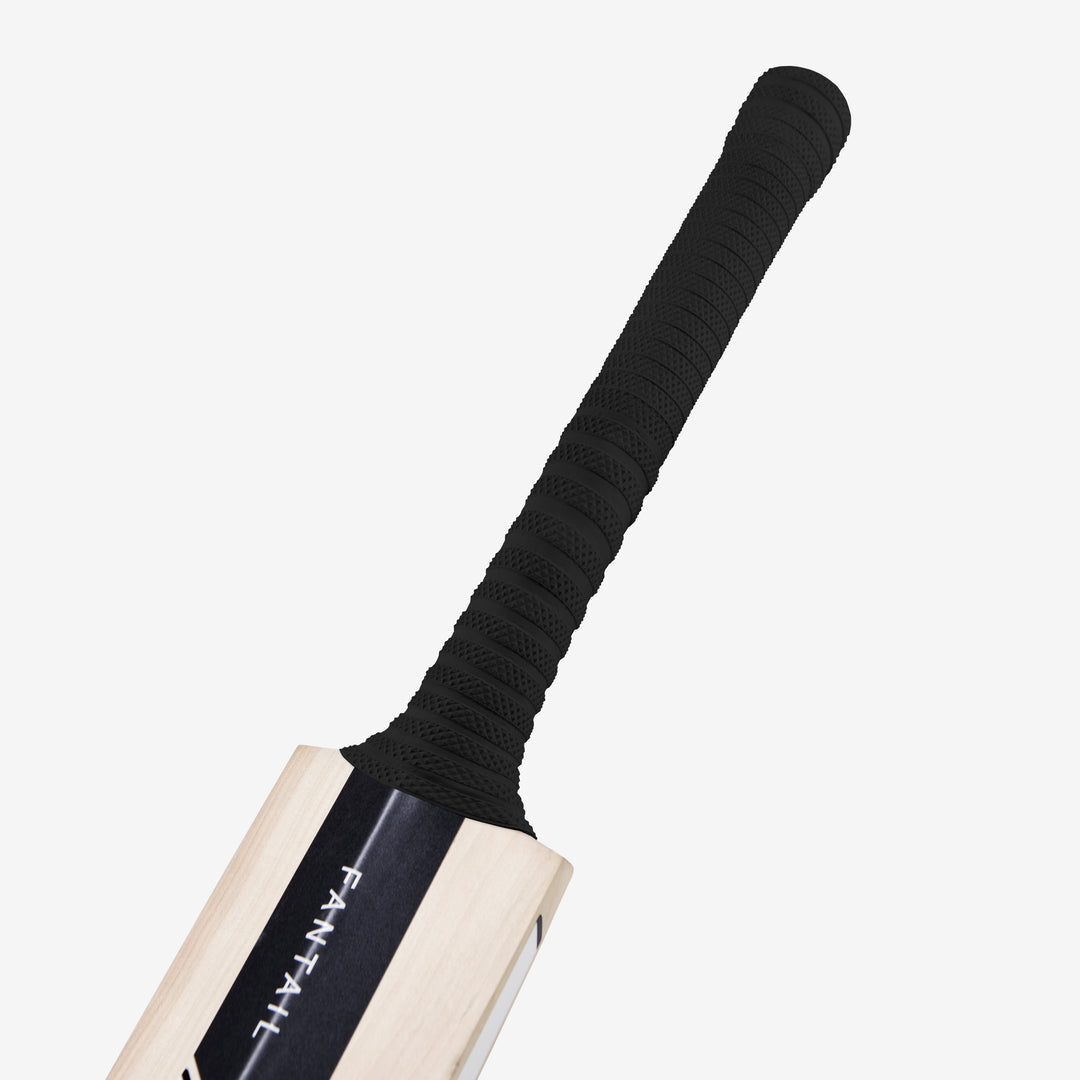
Dynamite
Essentially a pyramid grip, with hundreds of mini pyramids across the grip. The bottom hand is banded to create a thicker grip with simple pyramids on the top hand.
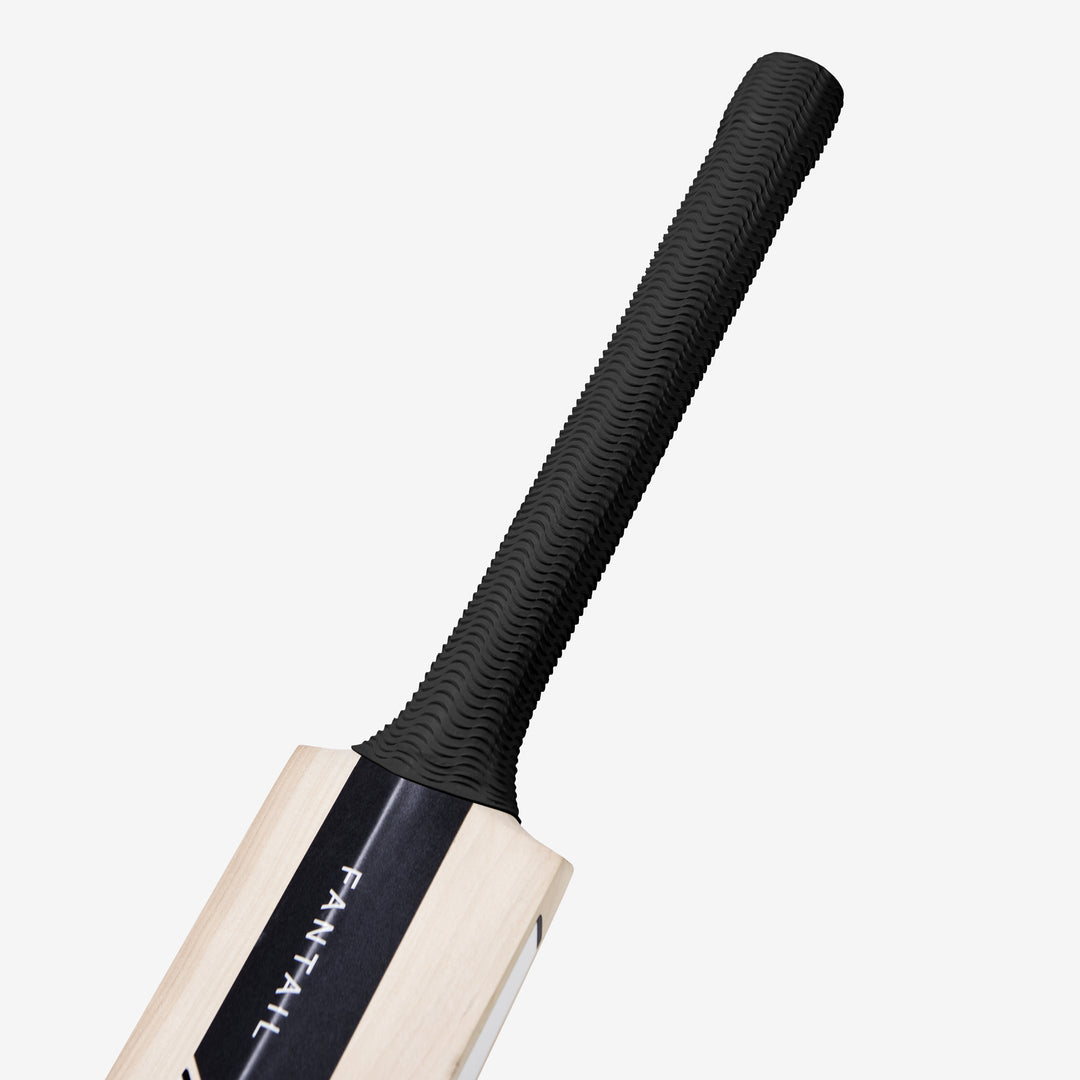
Aqua Wave
The surface texture of the Aqua Wave grip resembles alternating wave ripples, which create an important solid bond between gloves and bat.

Spiral Coil
Thicken up the handle on your cricket bat with our high-quality spiral coil grip—the thick ridges aid in helping to prevent your hands from moving when playing a shot.
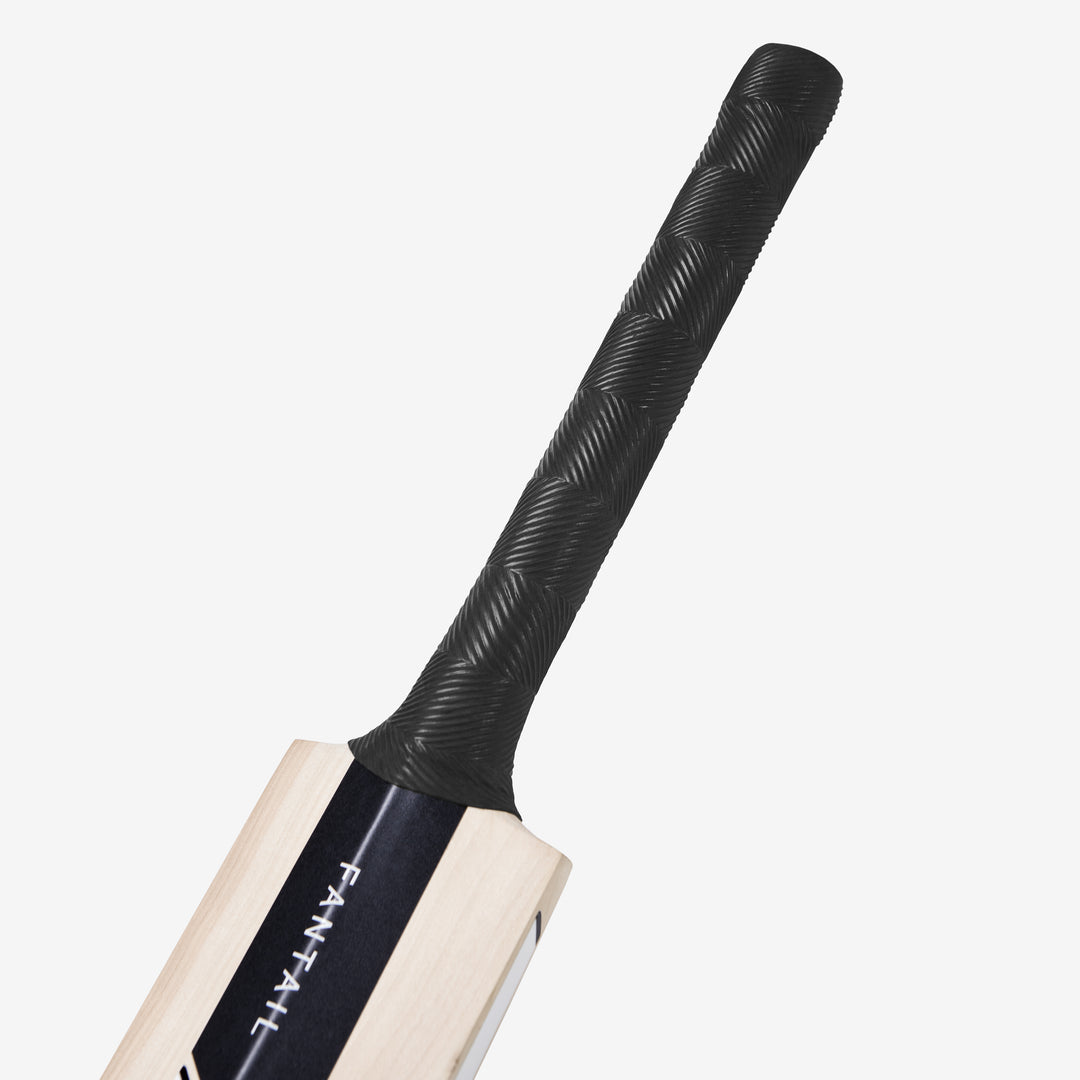
Chevron
Add some stability to the grip on your cricket bat with the popular chevron cricket bat grip alternating bars (of approx 3cm width) of diagonally raised grooves.

Octopus
The surface of this grip is covered in hundreds of mini octopus-like suckers and was the first grip texture to give a prominently raised feel.
WILLOW GRADING
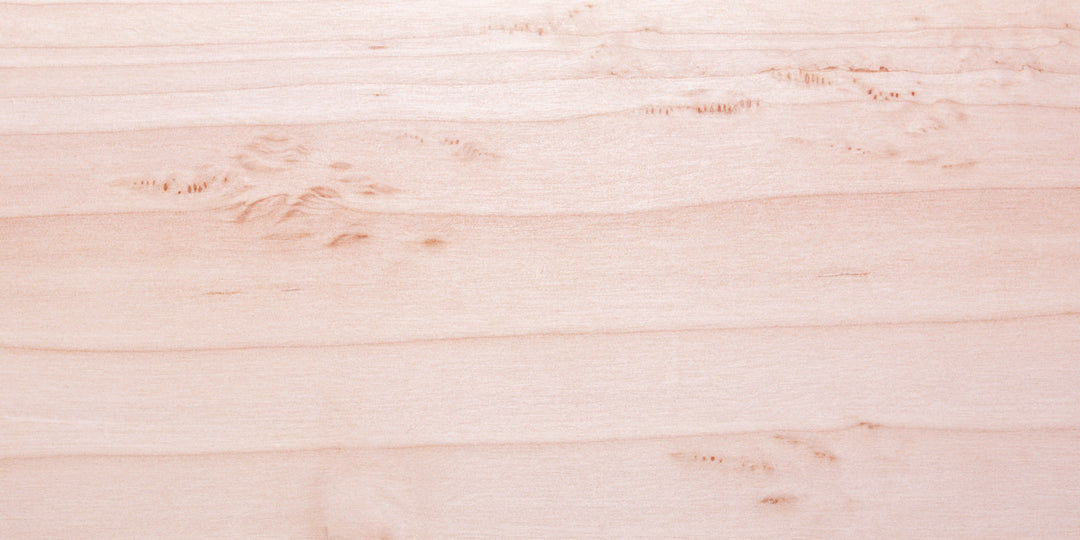
SELECT - EW
Still structurally sound English willow, this grade produces excellent indoor cricket bats. There will be a minimum of 4 grains on the face of the bat, which won't always be straight. Again heartwood, knots, and 'butterfly' stain may be present with perhaps more prominent "speck".

VINTAGE - KW
Our top grade of Kashmir willow. You can expect a great bat with at least six visible grains, performing excellently in indoor cricket. Blemishes, pin knots & heartwood are common, but generally, they will have a clean grain structure.
The willow won't look exactly the same as in the picture, as it's a natural product.
When placing your order, select 'Yes, please' in the 'Send pictures of willow options' section if you want a specific grain structure. We will email you options once we've received your order (we will refund your order if you don't like any of the options).
If the grade you want to order is sold out, view when new stock will be available HERE.




